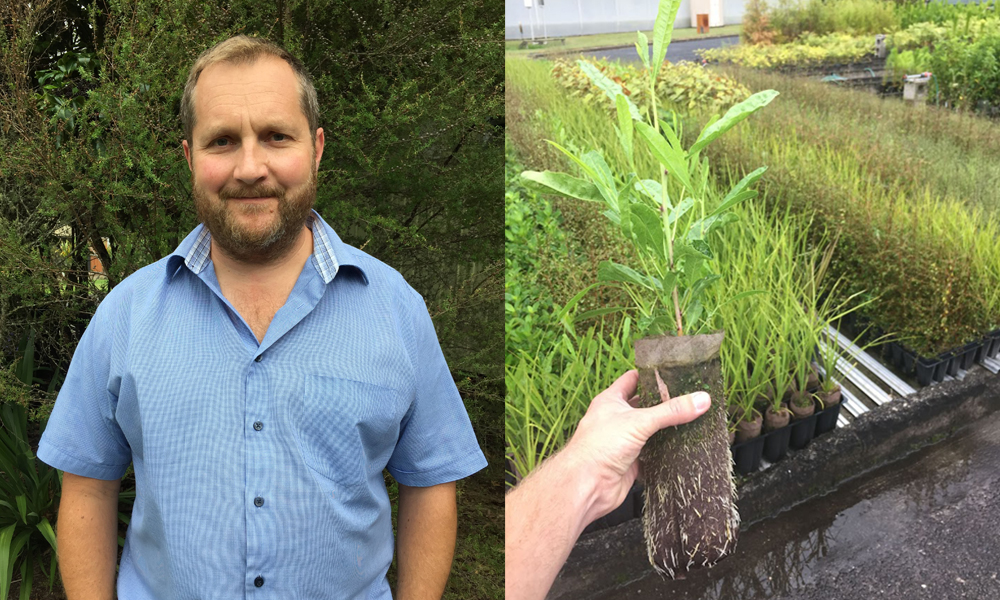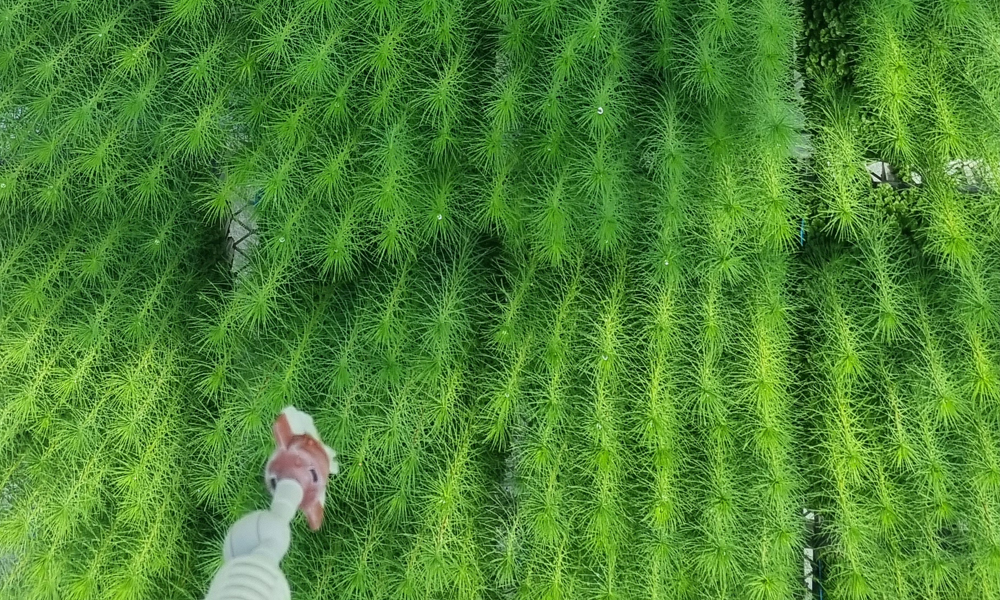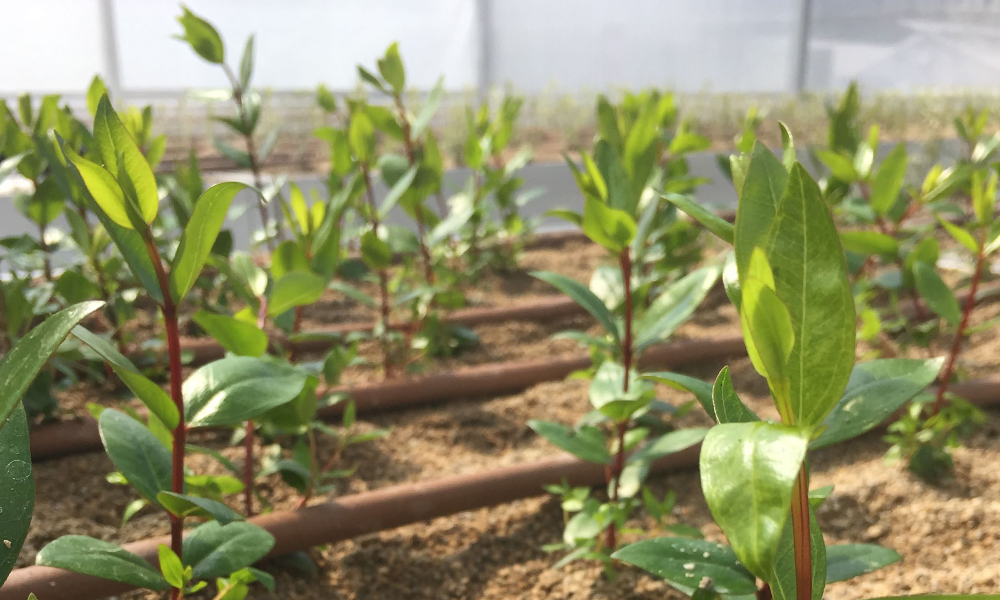Craig Ford was formerly the Research Group Leader: Plant Development and Physiology for Scion. Together, we reflected on this landmark project to revitalise the 10-hectare Scion Nursery in Rotorua.

Scion Nursery is focused on forestry propagation research and technology development for the industry, along with supporting Scion’s other forestry research requirements around silviculture and disease management. The nursery can produce more than one million seedlings per annum, with shade houses, controlled climate propagation facilities, a large purpose-built container-growing operation and a paper-pot growing system.
What was the vision for Scion Nursery back in 2019?
The overarching theme was to help the forestry industry get to the “right tree, right place, right purpose” objective. The goal was to improve the ability for the nursery to focus more on research, as that is where the nursery started. The aim was, in part, to demonstrate and deploy cutting-edge technologies on behalf of producers so they could embrace new propagation techniques for forestry quickly while fully understanding the risks and rewards. We wanted to demonstrate ways to grow genetically improved trees – faster, more sustainably and without compromising health, survival and growth in field.
To do this, we had to review current and future critical issues for our industry, survey what alternatives were in use elsewhere, and explore how to implement those in New Zealand as and when required. We drew on previous experience from South Africa and research on South American operations – both have advanced their propagation technologies ahead of what most of us do in New Zealand and produce significantly higher numbers of trees per year. The goal was to refine these approaches to something suitable for us here, with our unique growing conditions and markets.
What was the state of the forestry industry back then, and the challenges you had to consider in your vision for the nursery?
When we started this refresh program in 2017, forestry nursery production was about 51 million trees annually. At that time, the government was rolling out their ‘One Billion Trees’ programme, which required one hundred million trees to be established annually, ideally with 30% natives. We realised that scaling up operations, particularly of native trees, would require new approaches, especially where seed availability would be a limiting factor. We also needed to consider future pressures on tree propagation and how we might be able to mitigate them.
Over the past few years, particularly during COVID, our industry has faced significant labour shortages and labour cost increases (bare-root is very labour-intensive). There are environmental and potential social licence-to-operate issues around dealing with large amounts of chemicals and the potential for legislation reducing or even stopping current activities around irrigation, fertigation, and disease control. There is also the looming risk and impact of climate change on bare-root systems, which rely on partial dormancy combined with cold, wet planting conditions over winter for successful establishment.
Fortunately, the rapid scalability afforded to us through our primarily bare-root P. radiata production (as well as the inclusion of the booming Mānuka plantings) enabled us to quickly meet the increased planting demand of the past few years. With bare-root radiata seedling propagation methods well developed, understood, and executed in New Zealand, we felt that our research should focus on less developed technologies, like containerisation and vegetative propagation (particularly for native trees that were not being deployed at a forestry equivalent scale or cost at the time).
After considering these challenges, what was the final plan for this new nursery research facility?
We saw it as Scion’s job to acknowledge the challenges and let them guide us to find new approaches and technologies for better germination, improved rooting, reduced losses, and deployment of more trees with the same limited germplasm.
So, we set out to create a world-class Propagation Sci-business where we could do our own research, funded by industry and government, to examine containerised, bare-root, and paper pot growing systems and their relevance in a New Zealand context. We designed an appropriate facility (based on other nurseries worldwide) and went to market with a tender document with our key concepts and requirements. Many systems in this well-automated, lean flow facility were new to New Zealand.
Scion pitched the vision and drawings to PrimeHort on the desired facility. In a nutshell, all of the motherstock was to be contained in a controlled environment, with year-round production and processed in an undercover Header House, then rooted in Rooting Tunnels (with heated rolling benches), then out into a Growing Tunnel for hardening, and a final open growing-out phase to acclimatise for planting.
The facility’s rooted cutting production capacity was 690,000 per annum. This represented a reasonable compromise between research and production-scale activities, which often aren’t transferrable due to scale. This facility allowed Scion to test technologies at scale and produce plants for field testing at scale, too. Some of the South American nurseries on which the design concept was based produce 50 million per nursery per annum!
What were some of the technologies you deployed?
Some of the technologies we implemented included complete environmental control in our motherstock, rooting and grow-out areas (day length, humidity and temperature). All environmental controls, irrigation and fertigation are controlled by a central system, which can be remotely monitored and controlled. We also installed better ergonomic alternatives to what we currently see, such as motherstock in beds at hip height for weeding and harvesting (all under cover and sheltered from the elements), fully automated containerised production lines, hip height rolling tables in the rooting area (also maximising rooting area under cover), with the longer-term vision of switching all growing tables to rolling benches for easy movement.
Two of the ‘new to NZ forestry’ technologies we initiated were a sandbed containerised system for motherstock (as pioneered in South America) and the paper pot containerised production system.
Government funding, through the ‘One Billion Trees’ programme, also allowed us to test the vegetative propagation of several native species using motherstock in sandbeds too. The results were outstanding. We achieved excellent root strike and growth in several key species, such as Tōtara for potential forestry purposes and Pōhutukawa for conservation purposes (in response to the myrtle rust threat to this iconic species). It was exciting to think we could bulk up and deploy Myrtle Rust-resistant strains if that issue had really taken hold. That was a huge win and proved we could support breeding programs in both cases, with good results.
We were also very fortunate to have a paper pot machine supplied to test this technology in radiata and our native trees trials. We tested more than 20 native species, as seedlings, with various paper pot sizes against industry standards (like the PB2 plastic bags) and found that many species can successfully be deployed in a forestry grade (125-150cc) paper pot and that we could significantly reduce the propagation time. Most notably, we could successfully grow and establish twelve-month-old Tōtara seedlings in field.
Other work demonstrated that using paper pots allowed us to reduce the vegetative propagation time for clonal radiata cuttings from 12-14 months to 9-12 months without issue, which was a huge win and successfully showcased a new way of doing forestry in New Zealand.
What was the industry uptake like?
We generated plenty of interest during the early phase and held many open days and private visits. Our work has driven change, especially in producing native trees. We have seen significant uptake of the paper pot technology, in smaller volumes, in the native tree market. The uptake for radiata has been slower because it is a big capital investment, and there is a limited number of companies pursuing high genetic value through family and clonal cuttings production. Those companies with containerised growing systems have either started producing cuttings in paper pots or are actively investigating them. There has also been a strong move towards paper pots for mechanised planting in our industry.
Generally, the uptake of containerised growing in highly controlled environments could be faster. This is due to the high capital costs of this kind of growing versus the very cost-effective bare-root seedling model. Until legislation (or climate) makes bare-root too difficult, many producers will stick with what they know (and do very well). Ultimately, when the value is in high genetic material and you want to maximise propagation, the answer is a containerised system—so I do see a change-over becoming inevitable, albeit gradual.
The Scion Nursery demonstrated compelling success with containerised growing. Has interest remained strong with forestry growers?
At present, there is a strong demand for containerised trees at the fringes of the traditional, winter-based bare-root planting window. This is because containerised plants are more resilient under unpredictable climates, particularly hot and dry planting conditions. As our climate becomes harsher, we may well find an increasing need for this stock type in New Zealand.
The advantage of Scion is the freedom to take risks and test different processes because you have the backing of industry and government. We were able to test and prove results to a level where producers can now invest with confidence – and that is where we got to with paper pot growing.
Based on the work completed at Scion, where we demonstrated examples like 6-month-old radiata cuttings in paper pots being successfully established in the driest March for many years, we have confidence in containerised system suitability, particularly with paper pots. While results like this may take some time to commercialise, demonstrating that containerised stock can be produced in less than 12 months and will survive well in field, makes it far more appealing to the industry.
If you would like further information on how tailored nursery automation and greenhouse solutions can play a role in stronger productivity and profitability for your workplace – please contact us.








